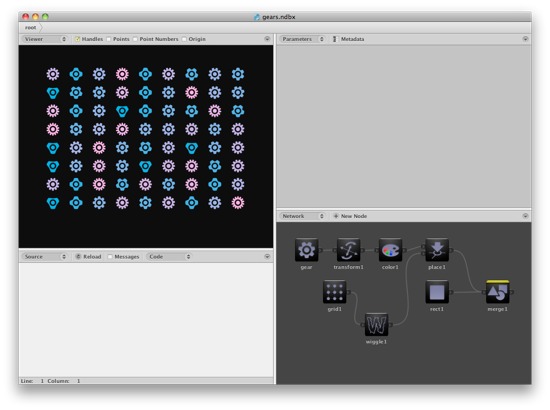


Revert to Default changes the port value back to its original value.Holding ALT and SHIFT nudge by 0.01 and 10, respectively.Įach individual port has a contextual menu: Click the arrow keys to nudge it up or down by 1.Drag the number while holding the SHIFT key to change it in increments of 10 (for big changes).Drag the number while holding the ALT key to change it in increments of 0.01 (for small changes).Drag the number to change it in increments of 1.Double-click the number to enter a new number.Ports can have different types: numbers, text, colors, menus, etc. Each node has different ports depending on its function. The port pane allows you to change the port values of the currently selected node. They allow direct manipulation of the shape, which is generally easier than dragging numbers in the parameter pane. Right-click and choose “Reset View” to reset the view back to 100% zoom.Use the scroll wheel to zoom the view in or out.In addition, it can show geometric detail such as the location of the points, their index numbers and the origin. It also shows handles for the currently selected node. The Viewer Pane shows the actual drawing. Visualisation of a co-expression network.A NodeBox document window consists of these main components: The Viewer Pane.Format conversion and layout calculation.Visualization using Cytoscape (version 2.3).To help the scientists apprehending their interest network, it is sometimes very useful to visualize them. Networks are generally represented by a set of dots (or of boxes) which represents its nodes that are linked via lines (the edges) or arows (arcs in the case of directed graphs). The nodes and the edges may present a label and / or a weight. The node label is generally indicated in the node box and the edge label is often placed on the line. NeAT contains some facilities to represent networks.
#Nodebox network graph software
It contains its own visualization software (display-graph) that will be described in the following. Moreover, it allows the conversion of the graph into formats that may be usedīy some visualisation tools like Cytoscape (, ), yED ()or VisANT (, ). Hereafter, we describe briefly some of the major formats used for graph description. Incompatibility between file formats is a constant problem in bioinformatics. In order to facilitate the use of the NeAT website, most of our tools support several among the most popular formats used to describe networks.The tab-delimited format is a convenient and intuitive way to encode a graph.Each row represents an arc, and each column an attribute of this arc. The two columns fields are the source and target nodes. If the graph is directed, the source node is the node from which the arc leaves and the target node is the node to which the arc arrives. Logically, in undirected graph, the columns containing the source and the target node may be inverted. Some additional arc attributes (weight, label, color) can be placed in pre-defined columns. Orphan nodes can be included by specifying a source node without target. The tool Pathfinder extends this format by supporting any number of attributes on nodes or edges as well as the color, the label and the width of nodes and edges.A GML file is made up of nested key-value pairs.The most popular graph editors support GML as input format (like Cytoscape and yED). The DOT format is a plain text graph description language.More information on this format can be found at. DOT files can be loaded in the programs of the suite GraphViz (). It is a simple way of describing graphs in a human- and computer-readable format. Similarly to GML, DOT supports various attributes on nodes (i.e. Several tools also accept adjacency matrices as input.VisML is the XML format required by VisANT, a very light but powerful visualisation tool. An adjacency matrix is a x table (with the number of nodes), where a cell indicates the weight of the edge between nodes and (or 1 if the graph is unweighted).
#Nodebox network graph how to
In this demonstration, we will show you how to visualize a network using some popular network visualization tools. This network we will study consist in the top scoring edges of the yeast co-expression network included in the integrative database String. This undirected weighted networks contains 537 nodes representing genes and 4801 edges. An edge between two nodes means that they are co-expressed. The weight expresses at which level both genes are co-expressed.


 0 kommentar(er)
0 kommentar(er)
